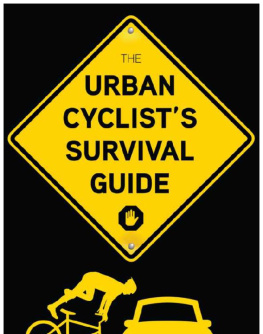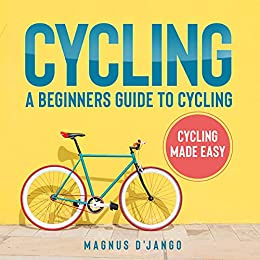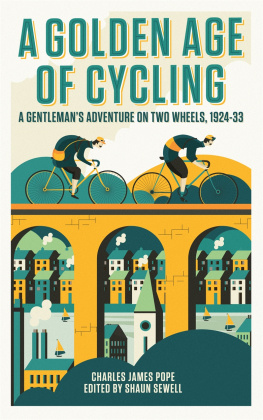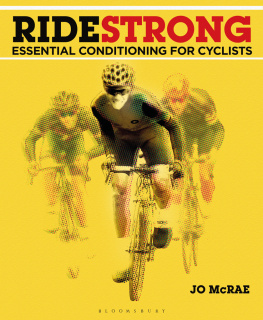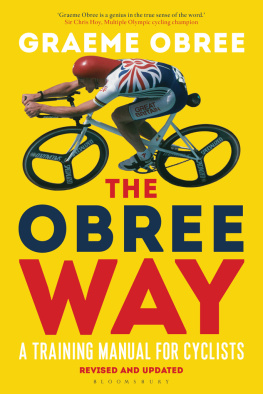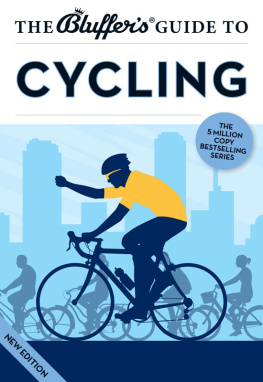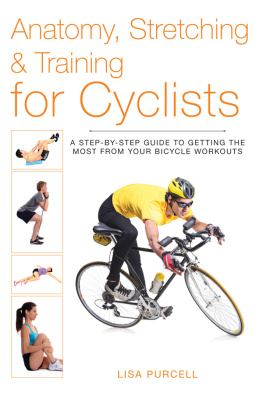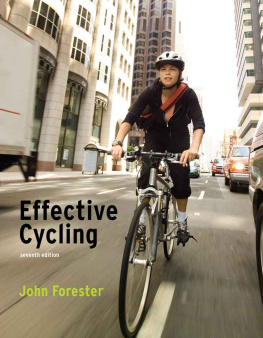No part of this publication may be reproduced, stored in a retrieval system, or transmitted in any form by any means, electronic, mechanical, photocopying, or otherwise, without the prior written permission of the publisher, Triumph Books, 542 South Dearborn Street, Suite 750, Chicago, Illinois 60605.
Triumph Books and colophon are registered trademarks of Random House, Inc.
Library of Congress Cataloging-in-Publication Data Rubin, James, I960
Urban cyclist's survival guide / James Rubin and Scott Rowan. p. cm.
ISBN 978-1-60078-566-5
1. CyclingHandbooks, manuals, etc. 2. Bicycle commuting Handbooks, manuals, etc. 3. City trafficHandbooks, manuals, etc.
I. Rowan, Scott, 1969- II. Title.
GV1043.7.R83 2011 796.6dc22
2011014966
This book is available in quantity at special discounts for your group or organization. For further information, contact:
Triumph Books
542 South Dearborn Street Suite 750
Chicago, Illinois 60605 (312) 939-3330 Fax (312) 663-3557 www.triumphbooks.com
Printed in U.S.A.
ISBN: 978-1-60078-566-5
Design by Sue Knopf
Unless otherwise noted, all photographs by Michal Czerwonka.
To Chris, Harper, and Saskia J.R.
To Ziggy, the reason I make sure to cycle home in one piece every day S.R.
Contents
6 Clothes How to Survive by Wearing
Preface
There is something brewing with bicycles and cities.
Its still small, but the signs of a movement are there. We see and hear anecdotally of more cyclists on roads in New York, Chicago, Los Angeles, and other cities. By cyclists, we dont mean the fancy, clip shoes set, out on 50-mile weekend jaunts. We mean people like us, wearing regular clothes, using bicycles for commuting, chores, and other daily purposes. We know of Brooklyn dads and moms pedaling around New Yorks hip-pest borough, their kids in protective seats and baskets laden with groceries. We see laptop-toting tech workers with their messenger bags hanging securely around their shoulders as they move swiftly up Los Angeless Sunset Boulevard, along with small groups of day workers on Huffys, Schwinns, and fixed-gear bikes.
We know of urban bike companies sprouting along the West Coast and more established firms manufacturing bikes and marketing others for the same consumers. These are more upright, comfortable bikes with straight handlebars. Some have old-style springs under the saddle. They look like bikes from the 1950s, or that you could find on a European street corner.
Several cities have added riders in droves. According to a recent American Community Survey, more than 6 percent of Portland, Oregon, commuters cycle to work. Portland is one of just three cities to earn Platinum status, the highest awarded, in the League of American Bicyclists bike-friendly city survey. Portland has nearly 300 miles of bike lanes and a program to equip low-income residents with bicycles and equipment. The university towns of Davis, California, and Boulder, Colorado, are the other two platinum towns, although both have populations of less than 100,000. About one in five Davis residents commutes by bike. Portlands population is more than 500,000.
Among other larger towns such as Seattle, Tucson, and Minneapolis, cyclists now make up more than 2 percent of commuters. These numbers may not overwhelm you. But they have risen in recent years. They are signs of progress among cycling advocates.
Some movements are movements before anyone realizes it.
We see more bike lanes, parking racks, and push-out bus shelves for far-away commuters who combine public transportation and cycling for longer treks to the office. We see more co-ops and other organizations for helping the poor get on a bicycle. These groups survive largely on private donations. People support them because they believe in the transformative ability of the bicycle. Having a bike has enabled individuals to keep jobs. As little as a decade ago, there were few, if any, co-ops.
In Los Angeles and New York, we walked into two stores Metropolis and Adeline Adelinethat focused on upright city bikes. Most had only three to eight gears. They were built not for speed but rather usefulness. There are more accessories for these old-style bikesretro baskets, bells, and even fenders. A few helmet companies are creating products that look like traditional headwearbeanie designs, helmets with brims, helmets meant to look like riding, and gentlemens and ladies caps.
Americas cities are nowhere near Europes major metropolitan areas for bike friendliness. Hollands 16.5 million citizens own 18 million bicycles. They ride on nearly 30,000 kilometersor more than 18,000 milesof cycling lanes, which if straightened and extended around the globe east to west, would take you across the Atlantic, Pacific, and into China. Three in five Dutch citizens cycle at least three times weekly. Amsterdam residents own roughly 550,000 bikes but only about 215,000 cars. And the Danes, particularly Copenhagen, may be just as bike crazy. Daily traffic on some Copenhagen bike lanes reaches 30,000 cyclists.
You can still travel miles in many U.S. cities without seeing cyclists. But the pockets of growth give us hope that we are in the beginning stages of a movement. This movement could have enormous benefits. The Texas Transportation Institutes most recent annual study on traffic delays found that commuters stuck in congestion burned nearly 4 billion gallons of fuel at a cost of more than $12.5 billion, based on a rough estimate of current gas prices. Yet according to a 1995 National Transportation Survey, one in two people live within five miles of their jobs. Thats easy cycling distance and a quick way to cut a household budget.
We drive because were used to doing it.
Cycling burns calories, but it doesnt seem like exercise. You dont have to make an effort to get on a bike the way you do to go to a health club. Given the current epidemic of obesityone in three people are obese in the U.S.it would be an understatement to say that we need people to become more active. Cycling helps create tighter communities. Its easy to meet people cycling. We see this in the rise of formal and semiformal riding groups. Some meet in the wee hours when streets are emptier and more cycling friendly. We see this in the way some people smile at cyclists. Does anyone ever smile at a passing Dodge Caravan, or even a Toyota Prius?
Cycling allows both the rider and the spectator to take stock of each other and of the world. Despite the steps forward, drivers hold sway in the political arena. The cycling lobby is small and scattered. This will take a while to change.
Still, longtime bicycle industry analyst Jay Townley, among others, sees hope in the pockets of urban growth. He believes more people will be returning to cities from suburbs. He sees cycling as the most logical means of transportation for these more densely populated areas. Townley is a former Schwinn executive who has spent more than four decades working in the cycling industry. His Gluskin-Townley Group publishes an annual report on sales. Partly because of the number of retailers in cities, he believes that urban cycling has established a beachhead" in bike-friendly cities. He is optimistic about future growth. Its going to grow, he said. There are already more bike-friendly cities. By 2020, a movement will be more established. Baby boomers have already wanted to go back to the bike. The country isnt going back to the days of Detroit. Its going forward.

